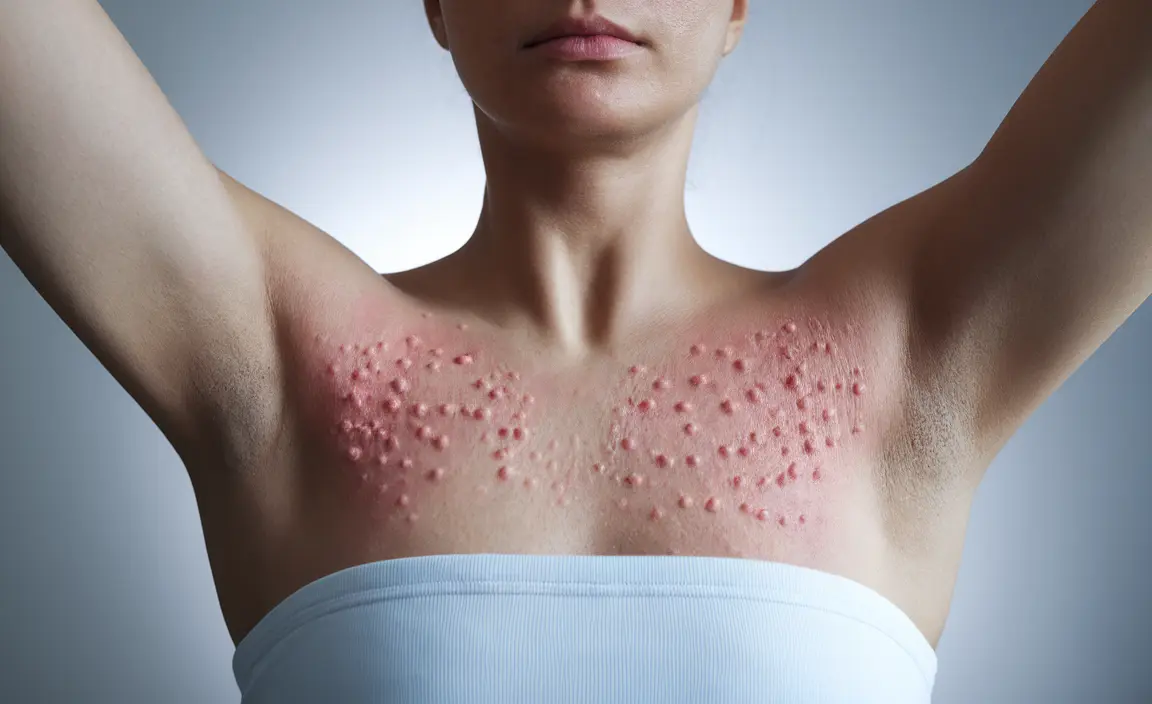Stage 1 hidradenitis suppurativa (HS) represents the earliest phase of a chronic skin condition that can significantly impact quality of life. Understanding the initial symptoms and treatment options is crucial for managing the condition effectively and potentially preventing progression to more severe stages.
This comprehensive guide will help you identify early signs, explore treatment options, and learn essential lifestyle modifications to manage stage 1 HS effectively.
Understanding Stage 1 Hidradenitis Suppurativa Symptoms
Stage 1 HS typically presents with distinct characteristics that differentiate it from other skin conditions. The most common symptoms include:
- Single or few isolated bumps
- Blackheads, often appearing in pairs
- Painful or tender nodules
- Mild inflammation in affected areas
These symptoms commonly appear in specific body areas where skin-to-skin contact occurs:
- Armpits
- Groin area
- Under the breasts
- Inner thighs
- Buttocks
Early Treatment Options for Stage 1 HS
Treating stage 1 HS promptly can help manage symptoms and potentially prevent progression. Common medical treatments include:
Topical Treatments
- Antibacterial washes
- Topical antibiotics
- Anti-inflammatory creams
Oral Medications
Your healthcare provider might prescribe:
- Oral antibiotics
- Anti-inflammatory medications
- Hormone regulators in some cases
Prevention and Home Care Strategies
Implementing proper self-care routines can significantly impact symptom management:
Daily Hygiene Practices
- Gentle cleansing of affected areas
- Using antibacterial soap
- Wearing loose, breathable clothing
- Keeping affected areas dry
Lifestyle Modifications
Several lifestyle changes can help manage symptoms:
- Maintaining a healthy weight
- Avoiding tight clothing
- Quitting smoking
- Reducing stress levels
Diet and Nutrition Management
Dietary modifications may help reduce flare-ups:
- Avoiding dairy products
- Reducing refined carbohydrates
- Including anti-inflammatory foods
- Maintaining adequate hydration
When to Seek Professional Help
While stage 1 HS is the mildest form, professional medical attention is important when:
- Over-the-counter treatments aren't effective
- Symptoms persist or worsen
- New lesions develop
- Pain becomes severe
Frequently Asked Questions
- What are the most common symptoms of stage 1 hidradenitis suppurativa and where do they usually appear?
Stage 1 HS typically presents as single or few painful bumps, blackheads (often in pairs), and mild inflammation. These symptoms commonly appear in areas where skin touches skin, such as armpits, groin, under breasts, and inner thighs.
- How is stage 1 hidradenitis suppurativa treated and what are the best home care tips to prevent flare-ups?
Treatment includes topical antibiotics, anti-inflammatory medications, and proper hygiene practices. Home care tips include gentle cleansing, wearing loose clothing, using antibacterial soap, and keeping affected areas dry.
- Can stage 1 hidradenitis suppurativa progress to more severe stages, and how can I reduce my risk of progression?
Yes, stage 1 HS can progress to more severe stages. To reduce progression risk, maintain good hygiene, follow prescribed treatments, avoid smoking, maintain a healthy weight, and seek prompt medical attention when symptoms worsen.
- Are there any lifestyle changes or diet recommendations that help manage stage 1 hidradenitis suppurativa?
Key lifestyle changes include maintaining a healthy weight, avoiding tight clothing, and managing stress. Dietary recommendations include reducing dairy and refined carbohydrates, increasing anti-inflammatory foods, and staying well-hydrated.
- What should I do if over-the-counter treatments for stage 1 hidradenitis suppurativa don't work—when should I see a dermatologist?
Consult a dermatologist if over-the-counter treatments aren't effective after 2-4 weeks, if symptoms persist or worsen, or if you develop new lesions. Early professional intervention can help prevent disease progression and provide more effective treatment options.




